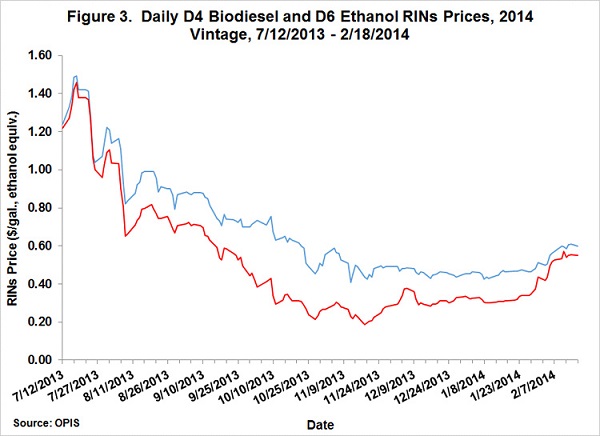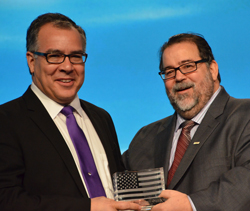A drop in prices for biodiesel and ethanol Renewable Identification Numbers (RINs) could indicate that the government’s proposal to cut the amount of the green fuels to be blended into America’s fuel supply will be reversed. In an analysis by University of Illinois agricultural marketing expert Scott Irwin, lower RINs suggest the market believes odds are the Environmental Protection Agency (EPA) will end up opposing its proposal.

Since late January 2014 D6 prices have once again risen rapidly relative to D4 prices. The price of a D4 and a D6 with 2014 vintages stood at $0.46 and $0.34, respectively, on January 27, 2014, little changed since early December 2013. Six trading days later on February 5 the price of a D4 and D6 had risen to $0.55 and $0.50, respectively. In other words, the price of D6 RINs increased by about 50 percent over a span of just six days! Obviously, something dramatic must have happened to change the market’s perception of the value of D6 RINs relative to D4 RINs. The conceptual model presented in Figure 1 strongly suggests that RINs market traders were convinced there is a much higher chance that the EPA will reverse the write down of the 2014 renewable mandate in final rulemaking, expected to be released in late spring or early summer.
Implications
Once again, the RINs market may be providing an early warning signal about a change in EPA policy. The recent rise of D6 ethanol prices relative to D4 biodiesel prices indicates that RINs traders believe the odds of the EPA reversing the proposed write down of the renewable mandate for 2014 in final rulemaking have increased sharply.
Another good indicator of a possible reversal are the words of Administrator of the EPA, Gina McCarthy herself, who recently told the meeting of the National Association of State Departments of Agriculture, “I have heard loud and clear that you don’t think we hit that right…[the final rule will be] in a shape that you will see that we have listened to your comments.”














